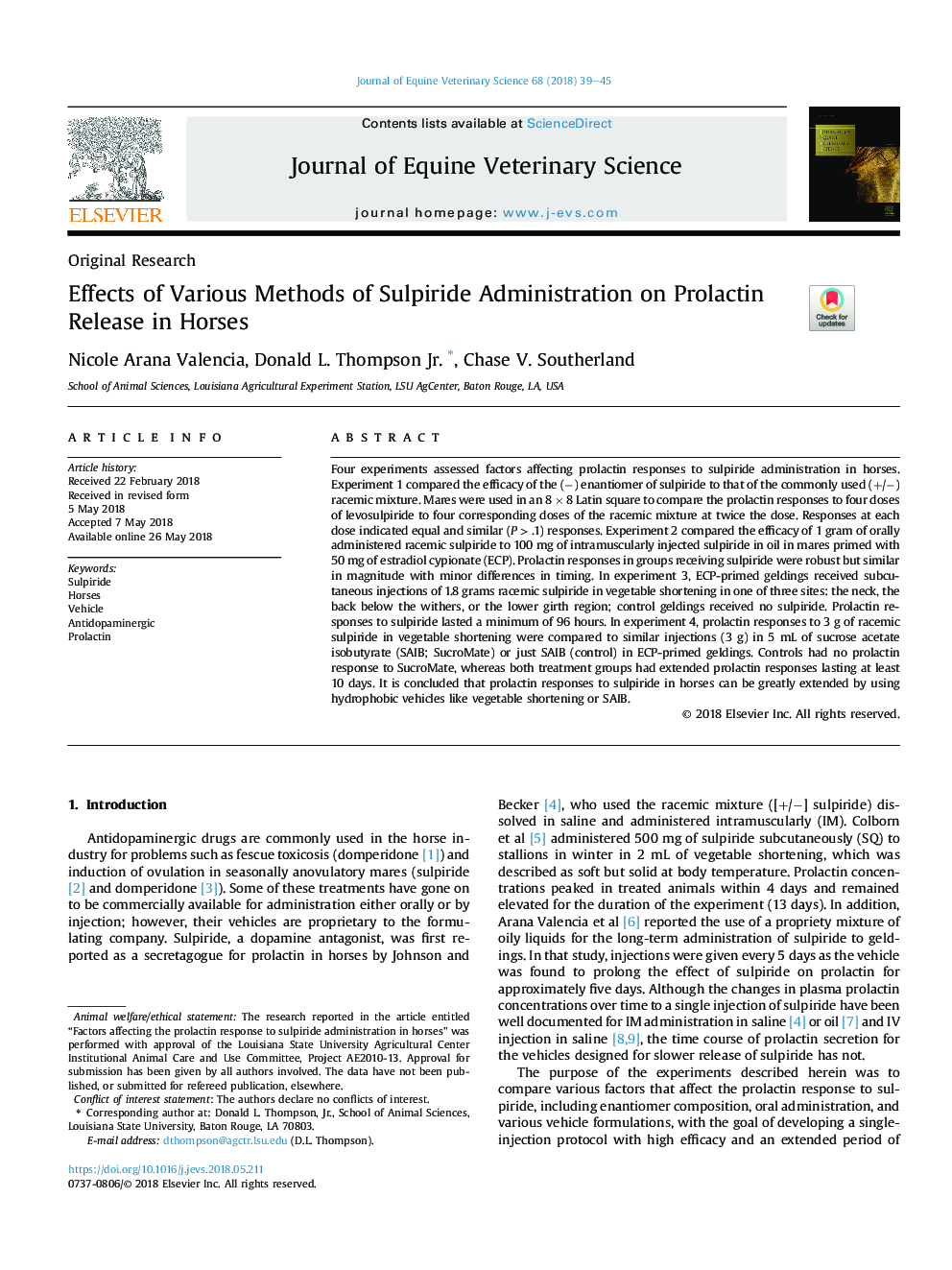| Article ID | Journal | Published Year | Pages | File Type |
|---|---|---|---|---|
| 8482531 | Journal of Equine Veterinary Science | 2018 | 7 Pages |
Abstract
Four experiments assessed factors affecting prolactin responses to sulpiride administration in horses. Experiment 1 compared the efficacy of the (â) enantiomer of sulpiride to that of the commonly used (+/â) racemic mixture. Mares were used in an 8Â Ã 8 Latin square to compare the prolactin responses to four doses of levosulpiride to four corresponding doses of the racemic mixture at twice the dose. Responses at each dose indicated equal and similar (P > .1) responses. Experiment 2 compared the efficacy of 1Â gram of orally administered racemic sulpiride to 100Â mg of intramuscularly injected sulpiride in oil in mares primed with 50Â mg of estradiol cypionate (ECP). Prolactin responses in groups receiving sulpiride were robust but similar in magnitude with minor differences in timing. In experiment 3, ECP-primed geldings received subcutaneous injections of 1.8Â grams racemic sulpiride in vegetable shortening in one of three sites: the neck, the back below the withers, or the lower girth region; control geldings received no sulpiride. Prolactin responses to sulpiride lasted a minimum of 96Â hours. In experiment 4, prolactin responses to 3Â g of racemic sulpiride in vegetable shortening were compared to similar injections (3Â g) in 5Â mL of sucrose acetate isobutyrate (SAIB; SucroMate) or just SAIB (control) in ECP-primed geldings. Controls had no prolactin response to SucroMate, whereas both treatment groups had extended prolactin responses lasting at least 10Â days. It is concluded that prolactin responses to sulpiride in horses can be greatly extended by using hydrophobic vehicles like vegetable shortening or SAIB.
Related Topics
Life Sciences
Agricultural and Biological Sciences
Animal Science and Zoology
Authors
Nicole Arana Valencia, Donald L. Jr., Chase V. Southerland,
